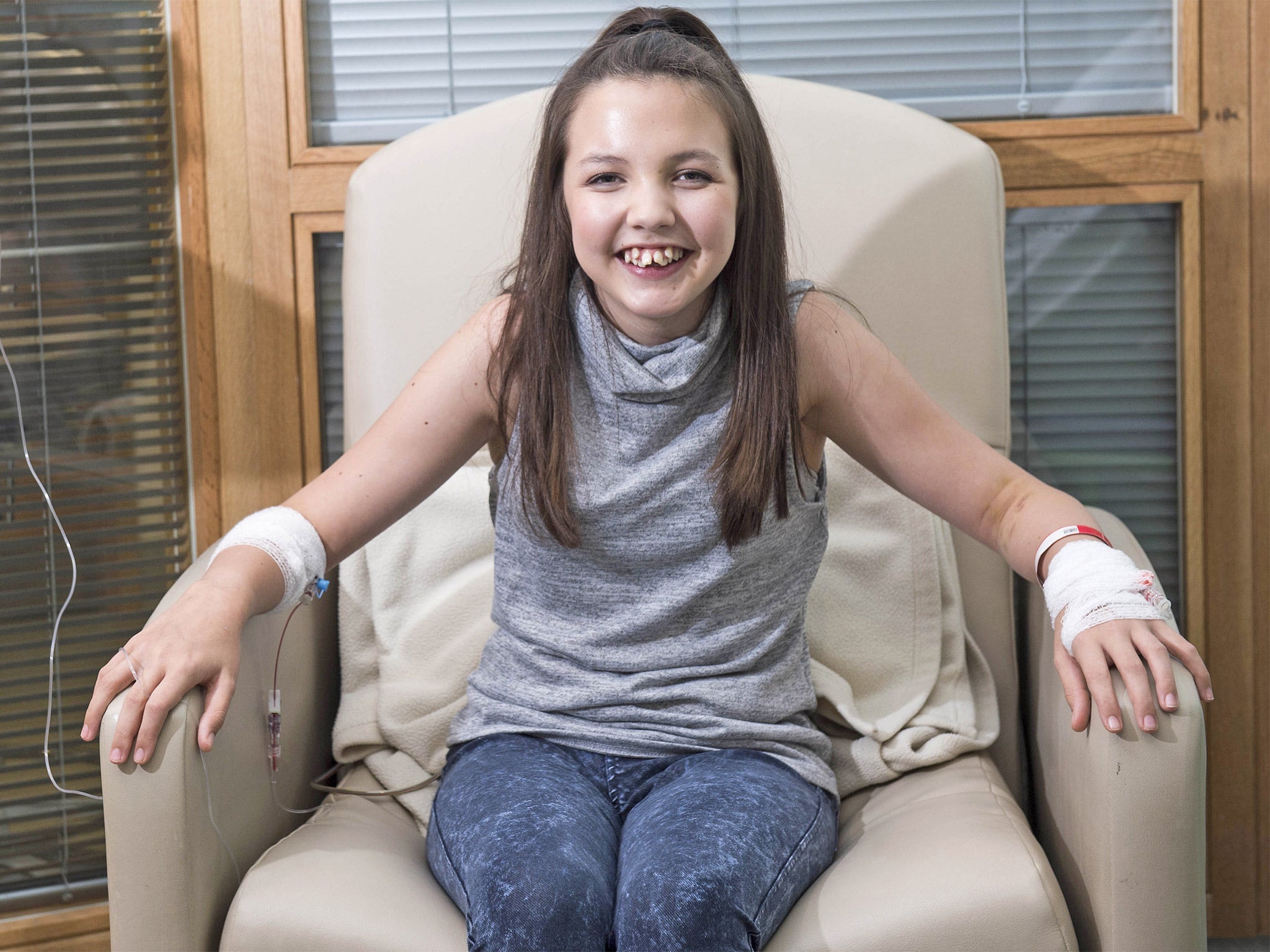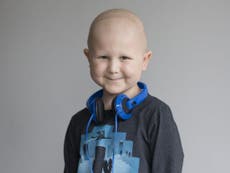How an artificial heart fitted at GOSH let a teenage girl get on with her life
The new heart means she can leave the hospital, return home and go back to school while she waits for a match on the donor list

A year ago Amy Willis was just like any other teenager. She was enjoying school, going to Girl Guides once a week and joining her friends for shopping trips in town at the weekend. Then she got sick. She was vomiting and had diarrhoea. Her mother Andrea “knew” it was more than just a bug.
Within weeks she was admitted to her local hospital in Flintshire, in north Wales, and within a month she was in a critical condition. Her tiny heart had failed and she was soon rushed by air ambulance to Great Ormond Street Hospital (GOSH) in London, her family left rushing to the train station to travel south to be at her bedside.
She was suffering from dilated cardiomyopathy and her heart was too weak to pump blood around her body. Within hours of arriving at GOSH she had become so sick that doctors put her on a heart and lung machine and confirmed what her parents had already started to fear; she would need a heart transplant and that roughly 30 per cent of patients die before a new heart becomes available.
“Four days after going into her local hospital, she suffered massive heart failure and was critical,” said her mother Andrea, 42. “Until then she’d been a normal 13-year-old, doing normal 13-year-old things. The doctors had first thought it was gastroenteritis and sent us home, but as her mother I knew it was out of character. I kno w her better than anybody.”
For Amy, now 14, the flight to GOSH was only her second time in the capital (more than 50 per cent of GOSH patients come from outside the capital). “I hated the air ambulance. I’m never going in a helicopter again. They had to strap me down and it felt like I was in Casualty,” she said. “I knew I was poorly, but I didn’t really know how poorly I was or what was going on.”
After she had spent a week in intensive care her doctors recommended that Amy become the fourth patient at GOSH to be fitted with a cutting-edge Heartware artificial heart. It was, they explained, the only choice available.
“The Heartware device has the benefits that patients can leave the hospital and there is a lower risk of stroke, but it does come with its own set of problems,” said Andrew Taylor, the director of cardiorespiratory at GOSH. “For example it is a pulseless device and sounds like a washing machine through a stethoscope, so we need to make sure a patient’s local GP knows what to expect.”
The Heartware doesn’t entirely eliminate the risk of stroke though, and in Amy’s case she suffered a stroke during the open-heart surgery to install the device. “She was initially affected quite badly by the stroke, but we had no other option, we had to go down the route of the Heartware,” said her mother.
Thankfully, Amy has recovered well from the operation and money raised by The Independent’s Give to GOSH appeal will fund research into devices such as Heartware to find longer-term solutions for patients waiting on the donor list.
Five months after her operation Amy is back at home as an outpatient and has returned to school in her home town of Penymynydd, where she is being supported by a teaching assistant. She hopes to take seven GCSEs within the next two years.
The experience and what lies ahead of her has obviously affected Amy, and speaking last week – during a set-back that saw her briefly readmitted to GOSH to treat an infection – she said the hardest thing about her treatment was being away from her 12-year-old brother Jack. “They are very close now,” said her mother. “But they still fight back home.”
It’s a lot for a teenager to deal with, and when asked how she keeps positive when she is in and out of hospital, Amy broke down in tears, hiding her face. “It wasn’t a great Christmas last year and I was in hospital for New Year, Halloween and Bonfire night too. It’s hard to be positive sometimes, but I’m lucky that I have my mum.”
Amy, who is now 14, and her mother went home to Flintshire on Sunday, and hopefully her infection won’t return, allowing her to spend Christmas this year at home with her extended family.
They know a call from the transplant team at GOSH could come any time – day or night – with the news that a suitable heart has been found. “We just don’t know when it will happen,” said Amy.
To Give to GOSH go to: http://ind.pn/1Mydxqt
To find out more about our appeal and why we're supporting GOSH go to: http://ind.pn/1MycZkr
DONATE
NOW
Fact file: What your money will buy
£3 could buy a box of glass microscope slides, which will allow GOSH researchers to examine life-threatening illnesses.
£9 could cover the cost of training a PhD student for an hour. Students are the research leaders of tomorrow. Through years of intensive training, they will develop the skills needed to discover the cures of the future.
£16 could help the play team organise fun and vital activities for patients who may be in hospital for days, weeks or even months at a time.
£23 could pay for an hour’s research time of one of GOSH’s senior scientists on the hospital’s pioneering pain research programme, helping children with life-limiting conditions who often experience excruciating pain.
£25 could help lift a patient’s spirits by sending them to a magical Christmas party.
£50 could cover the costs for a parent to stay a night in family accommodation so families from across the UK are never far from their child while they are in hospital.
£80 could cover the cost of one flowmeter in the planned cardiac unit, a crucial device that helps ensure children are getting just the right amount of oxygen while they recover.
£100 could help to buy equipment to help researchers understand children’s DNA. This equipment helps scientists to fight back against genetic diseases.


Join our commenting forum
Join thought-provoking conversations, follow other Independent readers and see their replies